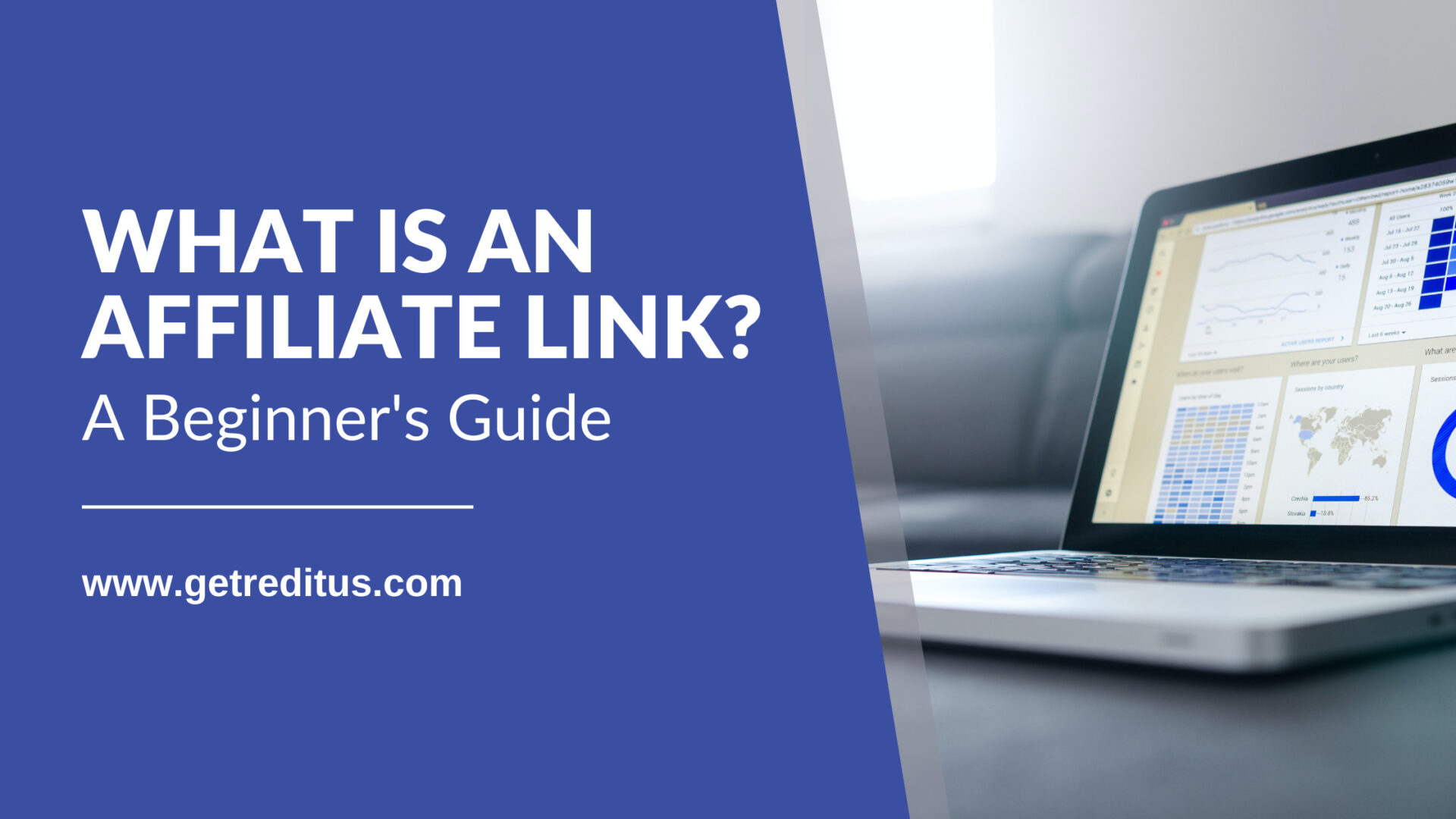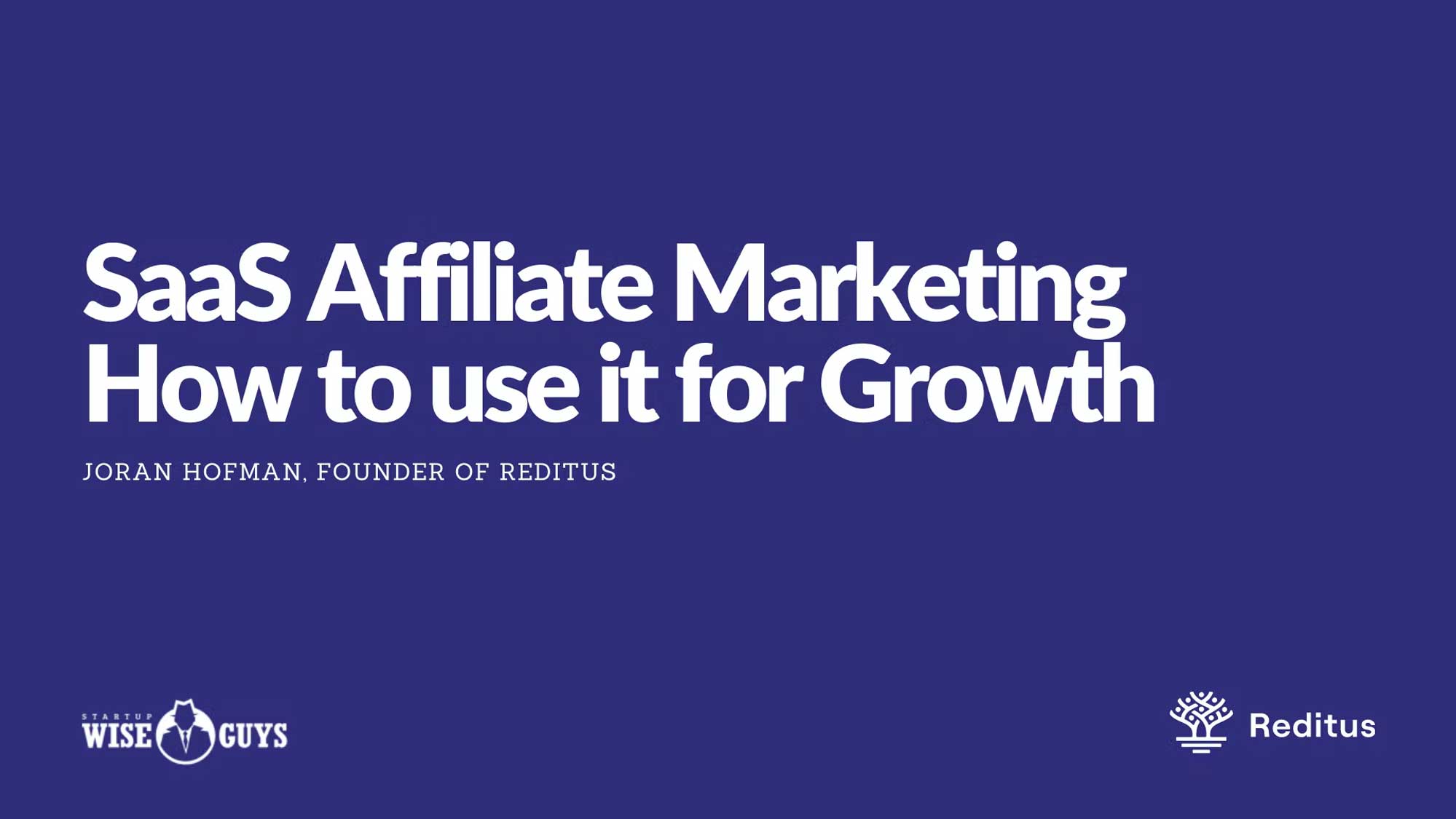How To Automate Affiliate Marketing: From Click to Payout

You just walked out of a marketing team meeting, and everyone's high-fiving over their new automation hacks.
The email marketing team has got their drip campaigns on autopilot, the social media folks have posts scheduled for the next month, and even the SEO team uses a tool for automated keyword tracking.
You start to wonder, "Why am I still manually overseeing every aspect of our affiliate program?”
So, here you are, keen on catching up and even overtaking your colleagues in the automation race.
This guide is your roadmap. We'll walk you through several actionable strategies for automating critical affiliate marketing tasks that have been bogging you down.
Our aim is that by the time the next team meeting rolls around, you'll be joining the high-five parade with your own automation wins.
Sounds like a plan? Let's get started.
Sneak peek: Your go-to guide for leveraging affiliate marketing automation
Feeling bogged down by manually performing affiliate tasks? We've got your back. This guide is your comprehensive roadmap to automating every element of your affiliate program. Learn several actionable ways to automate affiliate workflows like funnel tracking, affiliate recruitment, affiliate onboarding, and more. Plus, discover how Reditus can be your secret weapon for making these automation ideas a reality.
What does it mean to automate affiliate marketing?
Automated affiliate marketing refers to the strategic use of technology to manage, streamline, and optimize the tasks and workflows associated with running an affiliate program.
The scope of automation covers everything from tracking affiliate sales and calculating commissions to generating performance reports and managing payouts.
For example, imagine you're on the hunt for quality affiliate marketers who really understand the B2B SaaS space. You can list your program on a specialized affiliate marketplace like Reditus. This immediately puts you in front of affiliates who are not only experienced but are also actively looking for B2B SaaS companies to partner with. The result? Higher-quality sign-ups to your affiliate program without the need for manually reaching out to each of them.
In essence, it's your ticket to running a leaner, more effective SaaS affiliate marketing strategy.
Some compelling benefits of automating affiliate marketing tasks
We're about to unveil why automation in affiliate marketing isn't just a fancy buzzword but a concrete path to multiple rewards for your affiliate program. Let's dive into the benefits that can supercharge your affiliate marketing game.
- Increased efficiency: Simplifies repetitive actions, letting you focus more on strategic initiatives and partnerships.
- ROI maximization: Automation streamlines campaign management, allowing you to achieve higher returns with less resource investment in your affiliate marketing efforts.
- Consistent messaging: Automation ensures your brand message stays uniform across all affiliates, making it easier for you to manage multiple campaigns without worrying about brand dilution.
- Scalable growth: An automated affiliate marketing software can handle increased workloads effortlessly as your program expands.
- Streamlined partner & payout management: Automation simplifies the complexities of managing diverse affiliate partnerships and ensures timely, accurate payouts.
- Data-driven optimizations: Automation tools aggregate real-time performance metrics, giving you the actionable insights you need to make strategic adjustments to your affiliate program.
- Tailored partner engagement: Advanced segmentation and personalized messaging become achievable and scalable, enhancing the effectiveness of your affiliate campaigns.
- Agile market adaptability: With automated analytics and reporting, you can quickly identify market trends and pivot your affiliate strategies accordingly, staying ahead of the competition.
- Automated compliance monitoring: Automation tools can flag non-compliant content, eliminating your need to manually review each affiliate's output for industry and legal adherence.
Armed with insights on the incredible benefits of automation, let's pivot to action. We're about to delve into five core areas within your affiliate program that are perfect candidates for automation. And worry not; we're not just going to talk theory here. We’ll arm you with actionable strategies to turn these automation ideas into everyday reality.
Automation target #1: The affiliate marketing funnel - From click to conversion
To kick things off, let's talk about the affiliate marketing funnel, a crucial area ripe for automation. This spans the entire process, right from the moment someone clicks on an affiliate link to the point they convert into a paying customer. Here's how you can make it more efficient:
Strategy 1- Take a full-funnel approach
Joran Hofman, the brain behind Reditus, offers some valuable insight on this:
I think the first automation you want to have is the full funnel from somebody clicking a click to the partner getting attributed for the payment.
By taking a full-funnel approach, you're essentially automating every stage of the affiliate journey. This means you're not just tracking clicks or conversions but seamlessly connecting these metrics to ensure accurate commission payouts. An affiliate marketing automation software can help you do this with ease, giving you a comprehensive view of how your program is performing from top to bottom. This sets the stage for further automations down the line, from performance reporting to personalized affiliate engagement.
Strategy 2 - Implement a simple tracking script on your website to set this automation in motion
Implementing a tracking script on your website using Reditus is a straightforward yet potent way to kickstart this automation. Once someone clicks on an affiliate link, a cookie gets placed on their device. You can easily set the duration for this cookie right from the software.
Now, when a visitor clicks on an affiliate link and then fills out a signup form on your site, the code activates. This line of code only sends data back if the cookie is active, verifying the lead came from an affiliate. Once confirmed, integration with payment platforms like Stripe and Paddle kicks in, linking the visitor's email to ensure proper commission attribution.
This way, you're both tracking and attributing. And in the world of affiliate marketing, correct attribution is half the battle won.
For a step-by-step guide on setting up the tracking script, check out our video tutorial.
Automation target #2: Finding and recruiting affiliates
Finding and onboarding quality affiliates doesn't have to be a manual grind. Automation can streamline this key aspect of your program, offering smart ways to recruit the right partners. So, let's jump into the specifics.
Strategy 1 - List your program on relevant affiliate marketplaces
Caption - A screenshot of the Reditus SaaS affiliate marketplace landing page.
By listing your program on a specialized affiliate marketplace, you're automating the process of being discovered by relevant, high-quality affiliates. You don't have to chase or screen potential partners; they come to you. It's an automated pipeline of qualified leads that requires minimal manual intervention. Moreover, marketplaces often come with built-in analytics and tracking capabilities, making it easier for you to measure the effectiveness of your affiliate relationships.
The cherry on top? Your presence in popular SaaS affiliate platforms adds an extra layer of credibility to your program. Affiliates are more likely to trust and join a program that's listed on a well-known platform.
Take the case of Prospectss, for instance. By listing themselves on a SaaS-focused affiliate marketplace like Reditus, they were able to generate over $25k in revenue via affiliates within just a year. Currently, with more than 300 affiliates and counting, they have received a significant boost. You can dive deeper into their success story here.
Strategy 2 - Identify top-ranking sites and connect with their content managers for potential partnerships
Just like you'd automate backlink-building campaigns, you can use similar tools to automate your affiliate partner outreach. These platforms help you identify high-traffic, relevant sites, find the content managers behind them, and run personalized email campaigns. Here's a simple guide on how to do it:
- Run the queries: Start by identifying target keywords your audience is interested in. Input these into your chosen tool to find top-ranking sites in your niche.
- Prioritize websites: Use the tool's analytics to sift through the results and zero in on high-quality, influential domains.
- Email outreach: Leverage the tool to initiate personalized contact with the site's content managers or authors.
- Monitor and optimize: After the outreach, track key metrics like engagement or conversion rates to measure the campaign's effectiveness and adjust as needed.
This automated strategy enables you to identify and partner with potential affiliates who already have a strong web presence, thereby maximizing your program's reach and efficiency.
Strategy 3 - Trace back from competitor website affiliate backlinks
Just as you can identify potential affiliate partners by analyzing top-ranking domains in your industry, similarly, you can trace back affiliate traffic from your competitor websites. This method primarily involves using SEO tools like Semrush or Ahrefs to dig into the affiliate backlinks pointing to your competitors. Here's a focused approach to achieve this:
- Identify your competitors: List down your primary competitor websites.
- Analyze affiliate backlinks: Use an SEO tool like Semrush or Ahrefs to find affiliate backlinks pointing to your competitor’s sites. Pro tip: Look for backlinks with the "sponsored" attribute. This helps you zero in on affiliate-driven links.
- Similar outreach process: From here, the outreach process closely mirrors the method we outlined for the previous strategy. Use your outreach tool features to extract the email IDs associated with these domains that are involved in software affiliate marketing business, and then reach out to them, explaining why your product is worth promoting in their network.
By employing this strategy, you're essentially turning your competitors' strengths into your own opportunities. It's like a business jujitsu move. Now, you not only have a robust list of potential affiliates from your keyword analysis but also a list pulled from your competitors' playbooks. Talk about a win-win.
Automation target #3: Onboarding affiliates
Onboarding can be a tedious process, but when done right, it sets the stage for a productive and profitable relationship. Trust us, you want to get your affiliates up to speed ASAP so they can start driving traffic and conversions your way. Here are some key ways to automate your affiliate onboarding process for maximum efficiency:
Strategy 1 - Set up automatic application approvals
Manually approving affiliates can be a bottleneck that's hindering the growth of your affiliate program. Especially if you're a B2B SaaS company, you often invite partners you already have a relationship with. So, why make them or yourself jump through hoops?
With Reditus, you can easily streamline this workflow. Our unique 'auto-accept' link feature allows for immediate, automated approval for anyone who uses the link to join your program. This enables you to bypass the manual approval process, letting your trusted affiliates get down to business right away.
Strategy 2 - Share valuable info through automated email sequences
Your affiliates have signed up, and now what? Do they know your product well enough to sell it? Are they aware of your ideal customer profile? Do they have all the materials they need to effectively promote your software?
To address these questions and more, automating the onboarding process through email sequences can be a game-changer. By setting up email sequences on new partner signups, you can provide new affiliates with the information they need to be successful right when they need it.
Here's what you might include:
- Welcome email: A warm welcome message that also outlines what to expect in the coming days.
- Resource guide: An email linking to all the marketing collateral they might need.
- Best practices: Tips and techniques that have worked well for other affiliates.
Heads up: Reditus is building direct integrations with HubSpot and Salesforce. Soon, you'll be able to send new affiliate contact information straight to these platforms, enabling automated email campaigns for faster, more efficient onboarding. Keep an eye out!
Automation target #4: Affiliate performance monitoring and updates
Monitoring your affiliates' performance is not just good practice; it's essential for the growth and optimization of your affiliate program. But let's be real; you don't have the time to manually sift through every stat. That's where automation steps in to make your life easier. Here's how:
Strategy 1 - Leverage an automated metrics dashboard
Caption - Example of an affiliate program performance dashboard powered by Reditus.
What's happening now matters. Real-time tracking and reporting data consolidated in an intuitive dashboard can provide you with useful insights in one place. It's about having a live pulse on key metrics like clicks, conversions, and revenue generated. Automating this reporting feature can streamline your monitoring process, giving you more time to focus on your affiliate marketing strategy and optimization.
Strategy 2 - Send event-triggered communication
Caption - Example of an email message sent from the Reditus platfrom when a partner genrates a new referral.
Why wait to celebrate or motivate? Set up automated messages to congratulate and inspire your affiliates as they reach important milestones. These 'cheer moments' can be anything from their first referral to their first sale, offering timely boosts of motivation just when they're needed most.
To bring it full circle, monitoring and communication are interconnected in a high-performing affiliate program. Automated dashboards give you the data, and automated communications act on it. With both in place, you can truly take a hands-off approach while still keeping your finger on the pulse on performance.
Automation target #5: Payouts and fraud mitigation
Finally, when it comes to scaling your SaaS affiliate marketing efforts, it's crucial to handle payouts and fraud meticulously yet efficiently. Errors in either of these areas can have long-term consequences, affecting both trust and profitability. Automation can be a game-changer here as well.
Strategy 1 - Configure payment thresholds and scheduling
Every penny counts, but you don't want to spend your day handling dozens of tiny affiliate payouts. By setting an automatic payout threshold, say $100, you'll ensure that affiliates are required to generate a minimum amount of commission before getting paid. This limits the administrative hassle while also providing a motivating target for your affiliates.
Once the threshold is reached, the amount to be paid can be automatically tallied and listed for your approval. Some businesses go a step further and automatically trigger the payment through services like Stripe. But caution is advised; we at Reditus always recommend double-checking before initiating any financial transactions.
In the end, automating the 'who,' 'when,' and 'how much' of payouts can dramatically reduce the time you spend on this task.
Strategy 2 - Establish mechanisms to spot fraudulent activities
In the realm of affiliate marketing, encountering fraud is not a matter of 'if' but 'when.’ The good news? Automation can serve as your vigilant watchdog, spotting anomalies before they become full-blown issues.
- Spot self-referrals: Employ algorithms that cross-reference IP addresses or match the affiliate's domain with the referral. This ensures that no one exploits the system for their own gain.
- Monitor brand-named ads: Set up automated tools that flag when affiliates run paid ads featuring your brand name. This ensures your traffic isn't diluted by affiliates who capitalize on your brand's existing reputation.
- Guard against credit card fraud: Activate automated alerts that closely monitor indicators like unusually high refund rates or multiple sign-ups originating from a single IP address. These are often precursors to fraudulent activity involving stolen credit cards or commission schemes.
Ultimately, it's not just about automated payouts; it's also about making sure those payouts are legitimate.
Closing thoughts: Time to turn on these automation ideas with Reditus
There you have it - our deep dive into the world of automating your affiliate marketing program.
From automating the full funnel tracking to handling payouts, automation has the power to transform how you run your affiliate program.
But let's not forget that the right tools can make or break your automation strategies.
That's where Reditus comes into play. Imagine running many of the automation ideas we've discussed here through a single, robust platform.
Reditus not only brings high-level automation to the table but also introduces you to a marketplace of vetted B2B SaaS affiliates, amplifying your reach and impact.So why not take the next step? Book a demo with Reditus today and discover how we can be your most valuable ally in making your affiliate marketing program related workflows both efficient and scalable.


